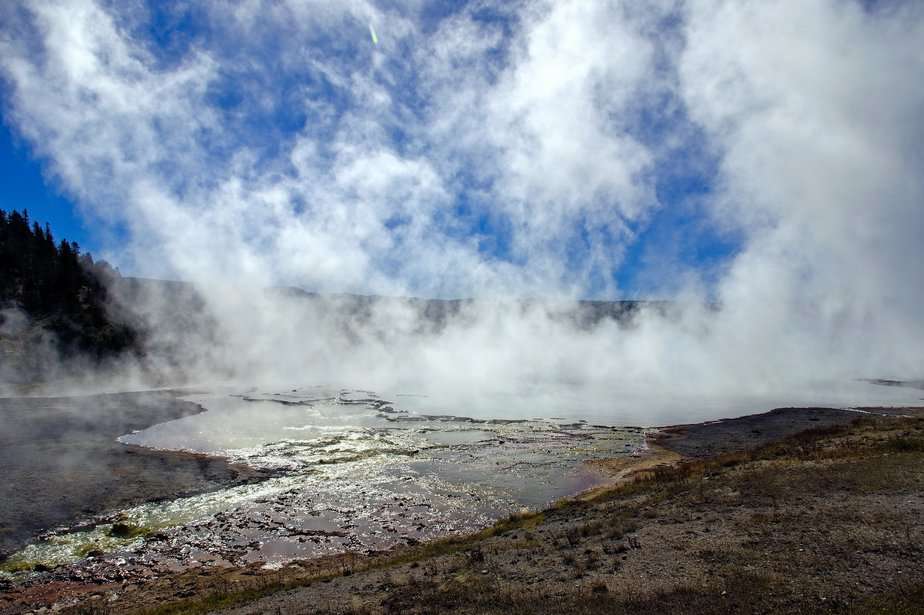
Managing runoff is crucial to a farm’s success
In the world of agriculture, the management of water resources is synonymous with the heartbeat of life itself. The inherent value of water is recognized universally, but perhaps nowhere is it more profoundly understood than on a farm.
The farm dam, a structure that might seem rudimentary, plays a pivotal role in fostering sustainable agriculture practices, notably in the management of runoff and stormwater. In this discourse, we explore the role and significance of farm dams in managing these water resources, illustrating how they contribute to ecological balance and agricultural productivity.
The Functionality of Farm Dams
Farm dams serve as reservoirs that capture and store water from various sources including direct rainfall, runoff, and sometimes diverted from rivers or streams. But their role is not limited to mere storage; they act as moderators in the farm’s water cycle, helping to manage the quantity and quality of water that permeates through the agricultural lands. Their functionality in this aspect can be broadly categorized as follows:
1. Water Retention and Supply
Farm dams accumulate water from various sources and serve as a sustainable supply chain especially during dry spells. This stored water is indispensable for irrigation, livestock, and sometimes even for domestic use, ensuring that the farm’s water needs are met judiciously throughout the year.
2. Runoff Management
During periods of heavy rainfall, farms can face significant runoff which not only leads to water wastage but also soil erosion. Dams facilitate the capture of this runoff, preserving water and protecting the soil structure. This water can be utilized efficiently during drier periods, promoting water-conservation practices.
Harnessing Stormwater Effectively
Farm dams are instrumental in harnessing stormwater, a resource that is often overlooked. Properly constructed dams can channel stormwater to prevent flooding while also providing a supplementary water source. Here’s how they contribute:
1. Flood Mitigation
Through the effective channelling of stormwater, dams can prevent the overflow of water onto agricultural lands, thereby protecting crops and soil structure from being washed away. They serve as buffer zones, absorbing the excess water and releasing it slowly to prevent downstream flooding.
2. Nutrient Recycling
Stormwater often carries with it rich organic matter and nutrients from the surroundings. By capturing stormwater, farm dams facilitate the collection of these nutrients, which can later enrich the soils when the water is utilized for irrigation, thus fostering a nutrient recycling system.
Environmental Benefits
Beyond the direct benefits to the farms, dams contribute positively to the surrounding ecosystems. Their role in preserving water and soil has larger ramifications on the local flora and fauna.
1. Creating Microhabitats
Farm dams create aquatic habitats that can support a variety of life forms including birds, amphibians, and aquatic plants. These microhabitats contribute to the biodiversity of the region, offering nesting and breeding grounds for various species.
2. Enhancing Groundwater Recharge
By slowing down the flow of water, farm dams allow for the percolation of water into the ground. This enhances groundwater recharge, which is beneficial not only to the farm but to the surrounding areas as well.
Implementing Best Practices
For farm dams to fulfill their roles effectively, they need to be designed and managed with precision. This involves considering various factors including the dam’s location, its construction materials, and ongoing maintenance.
1. Strategic Location
Choosing the right location for a farm dam is vital. It should ideally be situated where it can capture maximum runoff and stormwater while also considering the natural flow paths of water.
2. Proper Construction
The construction of the dam should ensure stability and safety. Utilizing appropriate materials and techniques will prevent leakages and breaches, ensuring the dam serves its purpose effectively for a long time.
3. Regular Maintenance
Dams require regular maintenance to retain their functionality. This includes monitoring the water quality, removing silt, and repairing any structural damages.
Conclusion
In the ever-dynamic landscape of farming, farm dams emerge as silent custodians of water resources. Their role transcends beyond mere water storage, embodying a multidimensional approach towards sustainable water management on farms. By mitigating the effects of runoff and stormwater, they not only conserve precious water resources but also safeguard soil health, thereby fostering a harmonious relationship between agriculture and the environment.
Through the integration of farm dams, farmers are empowered to adapt to changing climatic conditions, optimize water use, and enhance agricultural productivity. Moreover, these dams serve as vibrant ecosystems, enhancing the local biodiversity and contributing positively to the environment.
As we navigate through an era where water conservation is of paramount importance, the role of farm dams in managing runoff and stormwater on farms cannot be overstated. They stand as testaments to human ingenuity, facilitating a symbiotic relationship between man and nature, and nurturing life in its fullest spectrum.
As stewards of the land, it is incumbent upon us to recognize and promote the multi-faceted role of farm dams in fostering a future where agriculture is not just productive, but also sustainable and harmonious with nature. Through concerted efforts and informed practices, farm dams can indeed pave the way towards a greener, water-efficient future.
More reading
The Outlook on the Water Problem

Pingback: Removing Weeds From A Farm Dam: A Comprehensive Guide | Big Ditch Dam Building Company
Pingback: The Role Of Farm Dams In Microclimate Management On Farms | Big Ditch Dam Building Company